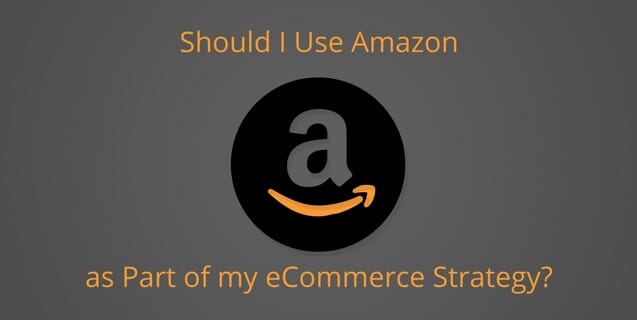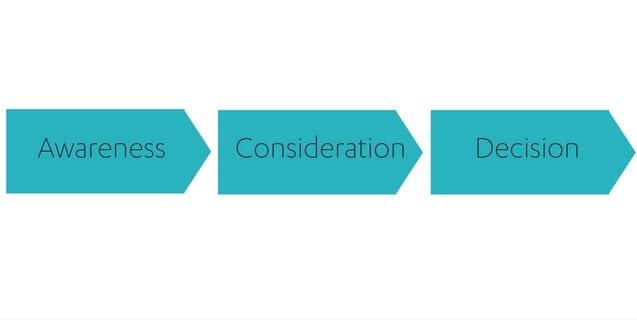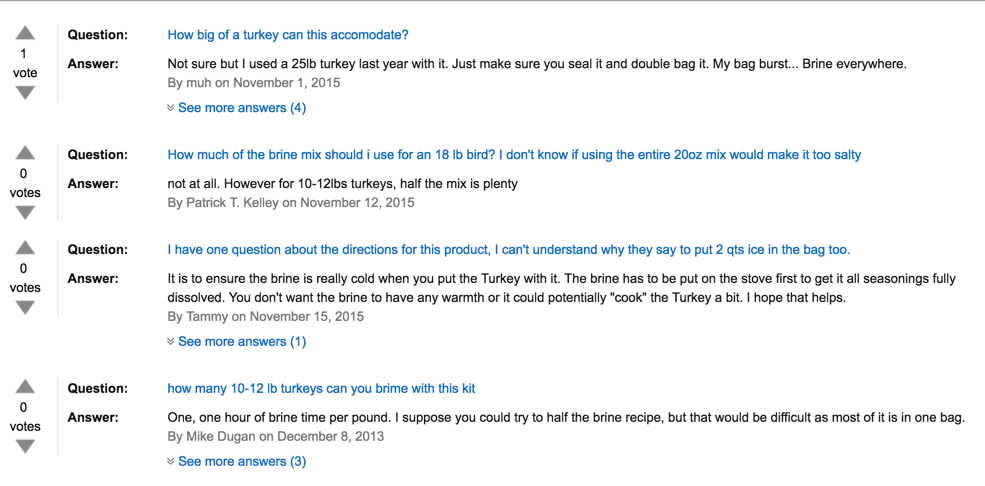If you have an eCommerce site, you probably have mixed feelings about selling on Amazon.com. Amazon can undercut prices and it can be hard to compete, but it can also be used as a marketing tool. Trust us. Read on.
Online shoppers go through 3 stages in their buying journey: Awareness, Consideration, and Decision.
Amazon is most effective to users who are in the Decision making phase. They have already decided what they want and are shopping for the best available price or a specific product.
But there are plenty of shoppers who aren’t quite there yet, which is where your website can come into play.
How Do You Get Customers to Migrate from Amazon?
Be an expert resource for users in the awareness and consideration stages.
Blogging
Blogging is the perfect venue for introducing your site to potential buyers during the awareness stage. Create content that helps resolve pain points and introduces users to general topics.
For example, if you’re selling turkey brine kits, you should have a post on “How to Make a Turkey more Flavorful.” As users stumble upon this content, they are made aware and can move on to the next step of the journey. As Amazon doesn’t have blog posts about making turkeys more flavorful, it’s a perfect place to show them up.
Use Amazon to Find What Questions Potential Customers Have
Amazon products have a question and answer section. When a user has a question, they can add it to the page. The answers are crowdsourced. Customers who’ve bought the product receive an email asking if they can answer.
When a question is answered, it’s added to the page. The results are detailed insights into what information your customers are looking for and gaps you can cover in your product detail pages.
For example, we can see that many users looking at a Turkey Herb Brining Kit are unsure of how many pounds of turkey the kit accommodates.
Leverage Your Amazon Presence with Branded Resources & Guides– Then Build on Them
Questions can paint a pretty clear picture of what users need. In the case of our example, they need to know the amount of brine needed for different size turkeys. By creating branded resources that address critical knowledge gaps, you’re building a user’s confidence in your brand.
Include the resource in your Amazon product photo gallery and on your site with additional useful content like step-by-step instructions with a video or links to other products that may be useful in accomplishing their goal.
Remember– be useful, not pushy.
Remeber– best useful, not pushy. Being a trusted resource means that the user doesn’t think you’re misleading them or trying to upsell them things they don’t need. If a user remembers your brand in association with a useful resource, they’re more likely to search for you by name. A trusted relationship pays a higher ROI than a quick sell.
Enhance Your Product Detail Pages
Every page on your site has at least one purpose. Product detail pages should provide information, satisfy various buying motivations, and answer questions to build confidence. Take an objective look at the design and experience of your site– or better yet, find a non-biased person or service to do it for you. In order for a user to share their credit card information, they have to genuinely trust the site.
Highlight the unique value you provide that can’t be shipped from a warehouse.
Also, give better, more detailed information and resources than your competitors. Use visually compelling images, helpful videos, and strong calls to action. Highlight the unique value you provide that can’t be shipped from a warehouse.
Leverage Free Shipping & Returns
One of Amazon’s big wins for users is shipping transparency. 50% of abandoned purchases are due to inadequate delivery options. Free shipping can be a huge incentive to purchase. Look at your shipping options. Is there a price point where the increased number of sales would negate the cost?
If shipping isn’t free– be honest and upfront about it. Show costs as early in the shopping process as possible. Being transparent and upfront about shipping costs and timeframes creates a sense of trust for potential customers.
Cash in on a Customer’s Lifetime Value
Whether the first transaction is on Amazon or your site, your greatest ROI opportunity comes from a customer’s Lifetime Value (LTV). LTV is the total amount of money that you’ll receive from a consumer throughout their entire lifetime as a customer.
According to HelpScout, the possibility of selling to a new prospect is 5-20%, but the probability of selling to an existing customer is 60-70%. By focusing on returning customers — their lifetime value — you are focusing on a strategy that provides your business higher profit margins.
Leverage Email Marketing and Product Packaging
Once a consumer has been exposed to your product, you have the perfect opportunity to engage with them quickly and incentivize a second purchase. Consider using coupon codes targeted specifically at repeat customers. For example, you could add a coupon for free shipping on their next order within the packaging for first-time buyers.
The quicker you can get a customer to re-engage with your brand, the more likely you are to retain them.
Be Great at Social Customer Service
Set yourself apart from the Warehouse feel of Amazon by creating as many engagement points as possible. When a potential customer feels that a brand is genuinely engaged and responsive to their needs and concerns, they cultivate loyalty.
In Conclusion
Let’s be honest: we can’t tell you how to run your business– and we wouldn’t want to. (Seriously guys, Google keeps us plenty busy!) But we can share out thoughts on the bigger picture.
Amazon’s tactic is their sheer mass. You’re not going to win against those ubiquitous boxes so rather than trying to fight them off, use them to build your brand. Make a mountain of Prime! Think of each box that ships out as a new introduction. Use Amazon reviews and questions to understand your audience– and your product!– better.
Most important: value your customers and do your best to keep them coming back.



